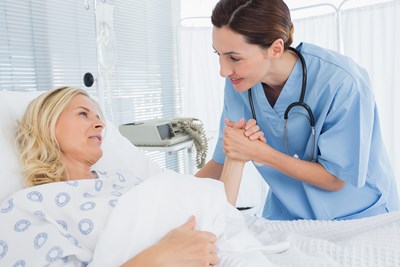Polycystic ovary syndrome (PCOS) is a common condition among women of childbearing age. This condition currently affects up to 5 million women in the United States, with some cases including girls as young as 11 years old. If you have PCOS, or are at an increased risk for developing the condition, here are some terms you should be familiar with.
- Ovary: The female ovaries are a pair of reproductive organs where eggs are produced in a process called ovulation. The ovaries are located beside the uterus on each side of the lower abdomen. PCOS affects the ovaries and their ability to normally produce eggs.
- Cyst: Polycystic ovary syndrome causes ovarian cysts to develop, which are solid or fluid-filled sacs on the surface of the ovaries. This can cause abdominal discomfort and pelvic pain.
- Endocrine system: The endocrine system is the collection of glands that produce hormones to regulate metabolism, growth and development, tissue function, sexual function, reproduction, sleep, mood, and other things. PCOS is a disorder that directly affects the endocrine system, which is why it causes a wide variety of symptoms to develop.
- Menstruation: This is the process of a woman shedding blood from the lining of the uterus once every month. PCOS causes problems with the menstruation cycle. This can include infrequent, absent, or irregular periods.
- Androgens: Androgens are primarily male hormones that females also produce in smaller quantities. When you have PCOS, the ovaries produce more androgens than normal. High levels of androgens affect the development and release of eggs during ovulation and can also lead to other symptoms, such as thinning of the hair, excessive or abnormal hair growth, adult acne or severe adolescent acne, and weight gain.
- Hirsutism: This is one of the symptoms that can arise from elevated levels of androgen hormones. Hirsutism causes an increased growth of hair on the face, chest, stomach, back, thumbs, and toes.
- Androgenic alopecia: This is male-pattern baldness or thinning of the hair, and it is another symptom that is caused by too much androgen in the body.
- Infertility: This is defined as the inability to become pregnant despite having carefully timed, unprotected sex for at least one year. One of the leading causes of female infertility is PCOS, because it often causes problems with ovulation. Fortunately, this is a problem that can be treated with ovulation-inducing medications.
- Insulin: Insulin, a hormone naturally produced by the pancreas that controls the change of sugars, starches, and other food into energy for the body to use or store. PCOS causes problems with the use of insulin, which often leads to an excess amounts in the body. The increase in insulin also leads to the increased production of androgens.
- Sleep apnea: This is a condition that causes breathing to temporarily stop while you are sleeping. Many women with polycystic ovarian syndrome also develop sleep apnea.



